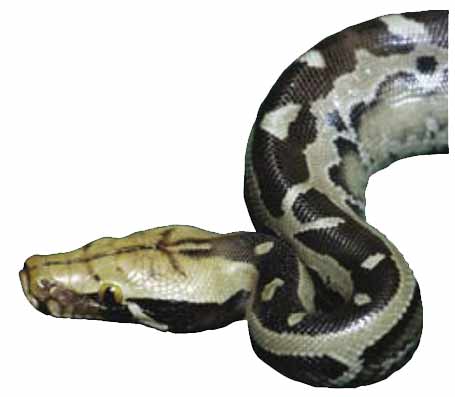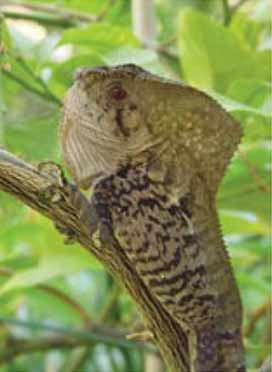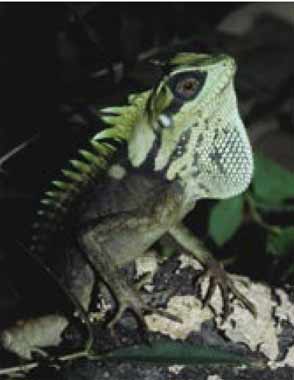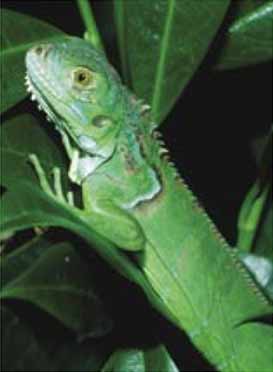
Juergen Hoch
hoch-rep@t-online.de
Juergen Hoch is working with reptiles since his child days and since 1994 he is successfully breeding several species himself. After studying two years in Freiburg, Germany and Cambrige, UK he graduated in 1999 at Anglia Polytechnic University, Cambridge as Bachelor of Arts (Hons) in Europeans Business. In July 1999 Juergen joined Import Export Peter Hoch (his fathers company), where he is responsible for Product Development, Accessories Purchasing and Customer Relations/Sales. On top of that he is greatly responsible for the development of the company's own brand "Lucky Reptile" which was successfully introduced in Germany and several other European countries.
In the past years we have seen rapid development in a niche market of the pet business. This market includes reptiles, amphibians and invertebrates and was originally put into the small animal field. However, with growing interest in these animals they are being considered as a separate group in the pet business to which we usually refer to as herp keeping or simply the reptile market. To simplify matters when we refer to reptiles in this article we are generally talking about amphibians and invertebrates as well.
Introduction
What animals belong to the Reptile Market?
Belonging to the reptile market are three
Basic groups:
1. reptiles
2. amphibians
3. invertebrates
However, within these groups we also have to distinguish turtles/tortoises, snakes, lizards, crocodilians, frogs, toads, newts, salamanders, scorpions, spiders, millipedes, mantids and a lot of other insects.
To keep these animals successfully at home there is a need for a lot of accessory products to meet the requirements of all these different animals.
The Market
Why has the Interest In reptiles In Europe been growing?
In the past the customer group for reptiles was very limited because there were no accessories available and a reptile keeper had to be technically adept if he wanted to set up a working reptile terrarium. The recent growth in interest for reptiles in Europe in the last few years is due to reptile accessories becoming readily available in pet stores, making reptile keeping much easier and more acceptable than it used to be in the past.
As a result a much wider range of the population is now seriously considering reptiles when looking for a suitable pet. The readily available reptile accessories make it possible for anybody to keep reptiles successfully at home. It is therefore safe to conclude that virtually everybody is a potential reptile keeper today. However, the normal reptile keeper is relatively young as the market is just evolving and the younger people generally tend to be more active in acquiring pets than older generations. Generally though, there is no significant difference between today's reptile keeper and someone who keeps dogs, cats, small animals or fish.
The US as motor for the European Reptile market
The relatively sudden development of the European reptile market can be contributed to the US market that is several steps ahead when it comes to reptiles as pets. In the US over 4 million households are currently keeping reptiles.
This is certainly due to the fact that in North America a much larger and diverse reptile fauna occurs than in Europe. As a consequence a large part of the population came in contact with reptiles from an early age creating a desire to keep reptiles as pets. This created a demand for appropriate products that made keeping reptiles at home easier. Adding to this development was certainly the fact that many American reptiles make excellent pets and can be kept in captivity with relative ease. Consequently a large proportion of US reptiles can also be found in European terrariums.
One of the pioneers in the reptile market is the company Zoo Med, San Luis Obispo USA which is now one of the market leaders offering a complete range of reptile products from heating and lighting items over cage furniture to vitamins and food products.
Having been successful on the US market Zoo Med looked to expand to other countries and was also a key factor in the development of the European market as a result. Being one of the first and having a very successful distribution approach, Zoo Med managed to achieve a wide market penetration within a short time and is maintaining a leading role even as more and more big European players are moving into the market.
 |
| Panter chamleom, pytom cutus (picture by pieter hoch) |
The European Reptile Market evolves
In most European countries there has always been a general interest but a limited demand for reptiles due to the lack of appropriate accessories. With accessories that made keeping reptiles much easier and acceptable now widely available in the pet trade, the market evolved quickly. Pet stores started to offer reptiles next to their aquariums and small animals cages, making these animals available and attractive to a much broader customer base. With growing demand and interest, more and more companies wanted their share of this market and started launching special product lines. While several new players specialising in reptile products emerged, also big players like Hagen, Vitakraft, JBL etc. wanted their share in this market and launched reptile product lines. Product specialists also became involved. For example, Arcadia, the UK based lighting specialists, used their technical expertise to develop a quality reptile lighting range which proved beneficial for the development of the market.However, keeping reptiles successfully in the shop and at home is a challenge. Therefore especially retailers are looking for suppliers who are concentrating on this field and have a wide knowledge of these animals like Import Export Peter Hoch, Waldkirch, Germany. Reptile specialist suppliers are consequently very successful in this market.
Reptiles In Asia
While other pets are quite significant in the Asian market, reptiles still have a way to go in the pet trade of this area. In most countries of this region reptiles are much more important as food source than as pet. While people do keep domestic reptiles in their homes, as a lot of reptiles also occur in this region, this happens on a very primitive basis as there are hardly any reptile products available in these regions.
In China about 691,000 snakes and lizards are kept as pets. However, only Hong Kong seems to have a profession reptile market with imported animals and accessories from abroad. The availability of accessories in most other parts of the country can be doubted and most of the kept reptiles are probably native to China. Currently the only relevant Asian market for pet reptiles is Japan. Whilst there has been demand for the animals themselves for years and there are various importers specialising on reptiles, the reptile accessory market seems to be lacking behind significantly. Even as all relevant accessories are now available, foreign manufacturers are complaining that they are only moving ahead very slowly compared to the obvious potential of the Japanese market. There seem to be also no major Japanese manufactures offering reptile products. On the other hand rare and special reptiles and especially turtles are in high demand and there are regularly animal imports into Japan.
 |
| Python curtus |
The manufacturer
Problems for the large mixed assortment manufacturers/wholesalers and the chance for specialist suppliers.
You should not forget the fact that while the reptile market is growing, it is also quite small in relation to other segments of the pet trade. The large companies face the problem that the demand for certain products is so low that it is not worthwhile for them to carry such a product in their line and they therefore fail to offer a full reptile product line to the market. However a retailer needs to offer the consumer a complete product line if he wants to be accepted as a serious reptile dealer and for this he needs a competent supplier like a specialist manufacturer/wholesaler.
The author generally considers it doubtful whether all the big companies will find it lucrative to stay in the reptile market, as at this stage it is still very small compared to the other segments of the pet trade. We have seen Tetra in the USA moving out of the reptile market again, because compared to fish food, the sales of reptile products did not match. Compared to other product lines many large manufacturers may find their reptile sales ridiculously small and consider stopping activities in this field again.
The small specialist suppliers that have evolved in this market are more flexible and have a different cost structure than the big players of the pet trade. While they lack market power, they can adapt easier to the specialities of this market. More importantly they can also offer the necessary expertise to their customers. Given these factors, a specialist supplier has the chance to establish himself in this new market and grow with it.
 |
| Corytophanes cristatus |
The retailer
Why Is offering reptiles so Interesting for most retailers?
Primarily, reptiles promise high growth rates due to an undeveloped but long existing market and also a new customer group to be gained.
A reptile section inside a store also brings other advantages, such as to be able to put the shop as a specialised shop on the map. Also it can help to generate more revenues in the other pet sectors. This is because reptiles are still an attraction to most people, meaning that nice terrariums with a good selection of animals will attract new customers to the store to look at these strange and exotic creatures. Being in the store already, people often tend to buy something. Retailers discover that reptiles are not only good to be sold but also to sell products from other ranges.
 |
| Acanthosaura spec |
Does a reptile section make sense for every retailer?
This question can clearly be answered with NO. At the end of the 90s and beginning of the new millennium, many retailers dipped their toe to some extent in the reptile market, because it promised good growth rates.
However, a lot of those retailers soon discovered that it is not an easy market. It should not be forgotten that while the market is indeed growing, it is also still
very small and also quite challenging.
Setting up a working reptile department is not easy thing to do and involves quite an investment in infrastructure.
Another problem retailers are often facing is the lack of qualified staff. The reptile market covers a wide field and involves many different species with completely different behaviour and needs. Consumers obviously expect good service and advice in a pet store. Schooling the staff is therefore very important if the retailer wants to develop a good reputation as a serious reptile seller. This obviously costs money.
Unfortunately it is common among retailers to keep the costs low and only to create a small reptile section with a handful of terrariums. Many also make the mistake of always having the same terrariums inhabitants. Those shops soon discovered that their new target group was more discerning then expected. People that were coming to view the animals soon found out that there was nothing new to see and started to stay away.
Another problem pet shops can face is the perception of reptiles in the population. Though the animals are nowadays widely accepted, there are nevertheless still a lot of people that a have a dislike for them or at least for certain kinds, like snakes or spiders. A reptile section can therefore also cause some trouble and cause some customer groups to stay away. A solution to this problem might be to put the reptiles into a separate room, so that those who do not like them do not have to get in contact, while the retailer still has an attraction for most other people.
By taking account of the fore mentioned problems and opportunities a retailer should do some careful thinking before implementing a reptile section in their shop.
 |
| Lguana iguana |
Conclusion
Reptiles are getting more and more popular as pets in many parts of the world and this for good reason: a lot of species make ideal pets, they can be kept appropriate to species also in relatively small cages (equipped with the necessary accessories), are not very noisy and are less problematic in holiday times than most other pets as they not necessarily require daily food and water. These are important issues today when you live in big cities where living space is limited. Since their space requirements are not huge, reptiles can be kept without problem in the smallest room. Contrary to other pets reptiles also tend not aggravate allergies which can be an important issue when choosing a people suffering from allergies.
Of course, reptile keeping is not a cheap hobby, keeping the animals properly requires some expenditure before the terrarium fulfils the needs of the animals. Nevertheless reptiles are becoming a more familiar sight in our homes and we have to get away from the thinking that these exotic animals are not suitable as pets. Provided they are offered the right conditions, which is no problem with the available accessories, reptiles are rewarding pets that are better suited for a life in captivity than most small animals and birds. The reptile market will therefore develop into a fully accepted part of the pet trade in the near future.
Source: PETS International Magazine
HOME - About PetsGlobal.com - Pet Industry Links - Update my company - Contact PetsGlobal.com
© 2001-2025 PetsGlobal.com All right reserved